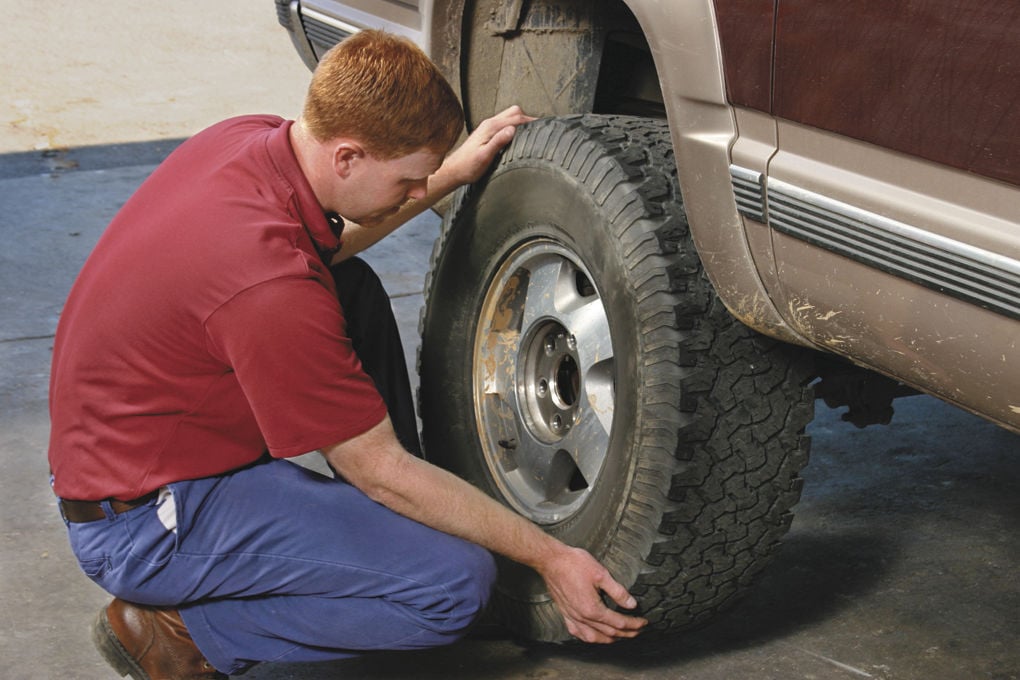You might be wondering how the tire actually stays on the rim. It might seem probable that the tires could fall off.
Let’s dive into that.
Tire rims hold tires in place with tire beads. The tire bead is a ring that forms the inside of the tire. When you drive over rough terrain, your tire beads are not just keeping your car on the road; they’re also making sure they sit exactly as they should.
Table of Contents
But how do they keep from falling off? There are actually several ways in which tire beads stay on their rims and prevent them from coming loose.
Each one has its own advantages and disadvantages, depending on whether you need speed or strength.
Some tires use wheel weights to help keep the tire beads secured to their rims. These weigh approximately 10-20 grams each, so they may not be strong enough for heavy vehicles like trucks or SUVs.
Other tires use tire locks or bead wedges. These are metal or plastic devices that fit into the grooves of a tire’s rim, helping to hold the tire in place and protect it from over-rotating during hard acceleration or sharp turns.
These are reinforced wires embedded in the back of a tire’s tread and wrapped around its rim, keeping everything in place even under high stress and heavy loads.
Although tire beads are extremely strong and durable, they can still be damaged over time.
For example, exposing a tire to extreme heat or freezing temperatures can cause the materials in its bead wires to weaken and break.
Additionally, driving over sharp or jagged objects on the road can cause damage to your tires’ rims, which may interfere with bead locks and lead to loose or broken tire beads.
Air pressure that is too low or too high can also cause tire beads to loosen and eventually come off of their rims, so it’s important to check your tires’ pressure levels regularly.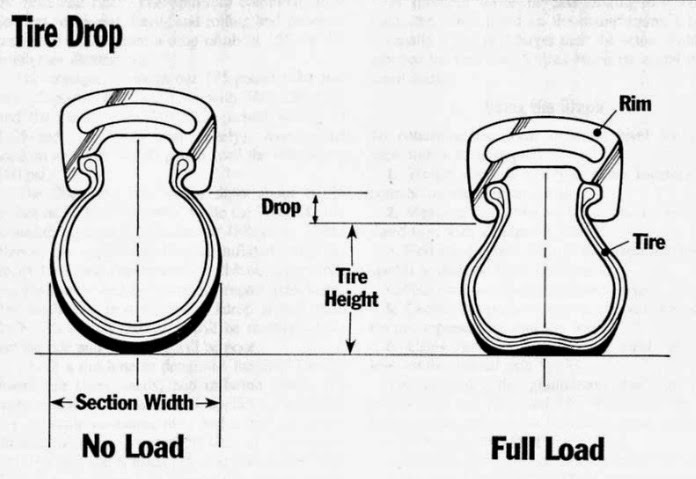
Driving with loose or damaged tire beads can be extremely dangerous, and it can lead to serious accidents.
Make sure to keep an eye on your tires and have them checked by a professional if you think there may be a problem.
If your tire beads do come loose, you’ll need to remount them before you can continue driving. This process is called “re-beading,” and it’s not as difficult as it may sound.
First, deflate your tire completely and remove it from its rim.
Next, clean both the tire and the rim with soap and water to remove any dirt or debris. Once they’re clean, dry them off completely.
Next, apply a bead wire lubricant to the back of the tire and the inside of the rim. This will help the bead wires slide into place more easily.
Finally, re-inflate your tire and mount it back onto its rim.
Make sure to check the bead wires regularly to ensure they’re still in place and not showing any signs of wear or damage.
Following these steps should help keep your tire beads in place, even in rough conditions.
Remember to drive safely and always have your tires checked by a professional if you think there may be a problem.
Yes, it is possible for a tire to come off the rim under certain conditions.
If a wheel is damaged or not properly secured, it can cause the tire to become dislodged.
The same is true if the vehicle hits a large pot hole or object in the road.
In these cases, the centrifugal force is not enough to keep the tire on the rim and it can become detached.
While it’s not common, it is possible for a tire to come off the rim under certain conditions.
If a wheel is damaged or not properly secured, it can cause the tire to become dislodged.
The same is true if the vehicle hits a large pot hole or object in the road.
Tire beads are what keep a tire securely in place on the rim of a wheel. The bead is the part of the tire that makes contact with the wheel, and it’s usually made of steel or Kevlar.
The bead is the part of the tire that makes contact with the wheel, and it’s usually made of steel or Kevlar.
Most tires also have bead wires or bead locks.
These are reinforced wires or metal devices that fit into the grooves of a tire’s rim, helping to hold the tire in place and protect it from over-rotating during hard acceleration
High cornering speed can put additional stress on the tire beads and may cause them to loosen or come off the rim.
The amount of force required to detach a tire from its rim depends on the type of bead wire or lock used.
If the bead is not properly secured, it can come off with relatively little force.
However, if the bead is properly secured, it can take a significant amount of force to detach it from the rim.
There are a few things you can do to make sure your tire fits your rims properly.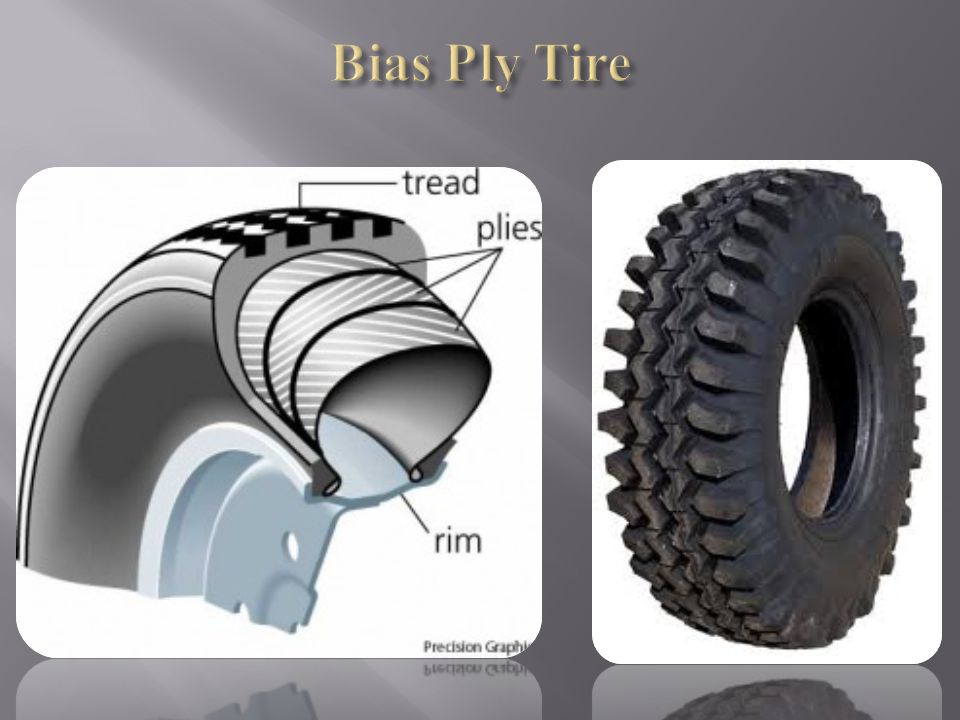
First, consult your vehicle’s owner’s manual or the tire manufacturer to find the recommended tire size for your specific vehicle.
Next, check the sidewall of the tire to make sure it matches the width and diameter of your rim.
Finally, inflate the tire to its recommended pressure and ensure that it sits squarely on the rim without any gaps.
Tires play an important role in holding a car up and providing it with traction. They are made of thick rubber compounds and reinforced cords, which together create a strong, flexible surface that can withstand high levels of pressure and torque.
In addition to supporting the weight of the car, tires also provide traction on various road surfaces and help maintain control during braking and acceleration.
Without properly functioning tires, a car would be much more difficult to maneuver and could put the safety of drivers at risk.
Therefore, it is essential to always maintain your tires by ensuring they are inflated properly and replacing them when necessary.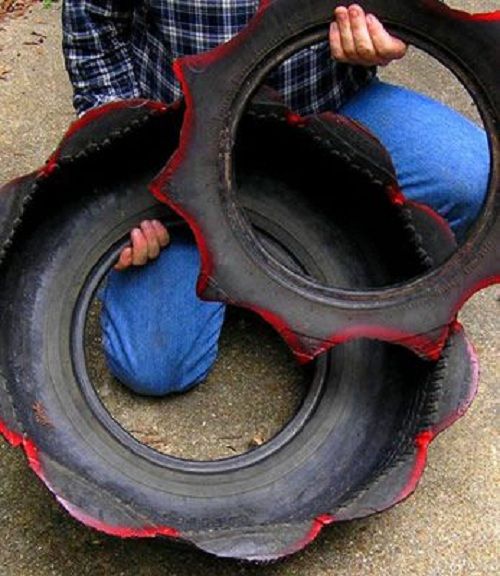
The wheels of a car are held on by the lug nuts. These are typically located at the center of each wheel and must be tightened to specific torque specifications in order to keep the wheel securely attached.
If the lug nuts are not properly tightened, the wheel could come loose and fall off while the car is in motion.
This could lead to a serious accident, so it is important to make sure that your lug nuts are always properly secured.
The hole in the center of a rim is typically called the hub or axle. This is where the wheel connects to the vehicle and allows it to rotate as you drive.
The size and shape of this opening will vary depending on your car’s make and model, as well as the type of rim you are using.
Some rims even have multiple openings for different types of axles, such as those used with large trucks or trailers.
Regardless of its name, this central hole is an important feature that enables your wheels to function properly.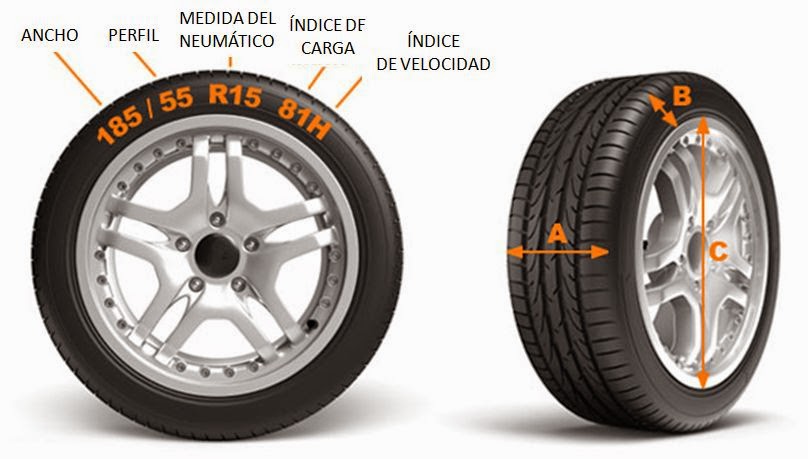
The outer rim section of a wheel is typically called the “lip.” This lip helps to keep the tire in place on the wheel and also provides added protection against impacts.
The lip is usually made of steel or aluminum, and it can be either flat or curved. Some rims even have multiple lips for added strength and durability.
Coyote Enterprises: Beadlock History and Evolution
Was this article helpful?
Great!
Click to share...
Did you find wrong information or was something missing?
We would love to hear your thoughts! (PS: We read ALL feedback)
Name (not required)
Email (not required)
Message
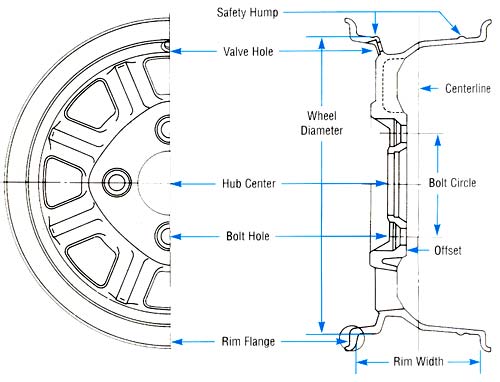 ) What exactly is holding it steady on the rim? : explainlikeimfive
) What exactly is holding it steady on the rim? : explainlikeimfiveLooks like you're using new Reddit on an old browser. The site may not work properly if you don't update your browser ! If you do not update your browser, we suggest you visit old reddit .
Press J to jump to the feed. Press question mark to learn the rest of the keyboard shortcuts
Search all of RedditFound the internet!
r/explainlikeimfive
This thread is archived
New comments cannot be posted and votes cannot be cast
r/explainlikeimfive
Explain Like I'm Five is the best forum and archive on the internet for layperson-friendly explanations. Don't Panic!
Created Jul 28, 2011
r/explainlikeimfive
ELI5 Why do we need to rake/bag up leaves? Wont they...
91%
2.0k
2d
r/explainlikeimfive
ELI5 How do chickens have the spare resources to lay a.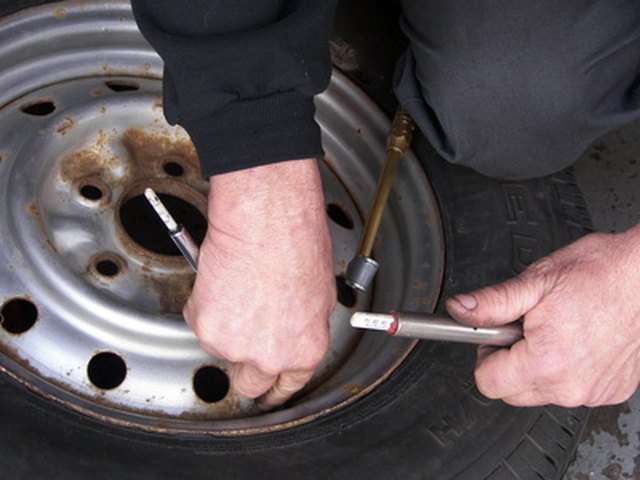 ..
..
95%
1.3k
2d
r/explainlikeimfive
ELI5: If ADHD is caused by having a lower baseline...
94%
1.1k
3d
r/explainlikeimfive
ELI5: Why do human babies cry so much as opposed to...
95%
923
4d
r/explainlikeimfive
ELI5: How do they remove the caffeine from decaffeinated...
94%
782
4d
r/explainlikeimfive
ELI5: Why do computer chargers need those big adapters?...
91%
1.1k
6d
r/explainlikeimfive
ELI5:why do orchestras need music sheets but rock bands...
92%
1.1k
5d
r/explainlikeimfive
ELI5: Why do browsers sometimes drain a lot of RAM until...
94%
605
6d
r/explainlikeimfive
ELI5 - why do data breaches cost millions of dollars?
93%
302
20h
r/explainlikeimfive
ELI5: Why do ~2 hour movies take 2-3 years to make, while. ..
..
93%
211
5d
r/explainlikeimfive
Eli5 Why wasn’t emperor Hirohito persecuted or killed...
93%
478
6d
r/explainlikeimfive
ELI5: what does it mean to be “meta” about something?
92%
514
1d
r/explainlikeimfive
ELI5: what is the “second breath” phenomenon that runners...
94%
269
3d
r/explainlikeimfive
ELI5: How does my electric company know what exactly is...
94%
181
4d
r/explainlikeimfive
ELI5 how do non drug induced Visual Hallucinations work ?...
93%
84
6d
Reddit and its partners use cookies and similar technologies to provide you with a better experience.By accepting all cookies, you agree to our use of cookies to deliver and maintain our services and site, improve the quality of Reddit, personalize Reddit content and advertising, and measure the effectiveness of advertising. By rejecting non-essential cookies, Reddit may still use certain cookies to ensure the proper functionality of our platform.For more information, please see our Cookie Notice and our Privacy Policy .
By rejecting non-essential cookies, Reddit may still use certain cookies to ensure the proper functionality of our platform.For more information, please see our Cookie Notice and our Privacy Policy .
Advertisement
Let's talk about the structure and arrangement of a car wheel. What is a wheel and what is a tire. What is the difference between a radial tire and a diagonal tire? Information for novice motorists and dummies.
Wheels provide movement by converting rotation into translational motion of the machine. They perceive and smooth out impacts from bumps on the road surface. Controllability, stability and smoothness depend on them.
According to the purpose, the wheels of the car are divided into driving, driven, driven and combined (simultaneously driving and driven). The wheel consists of:
The wheel consists of:
Car wheel device: 1 - wheel disk, 2 - rim, 3 - bead, 4 - chamber, 5 - sidewall, 6 - cord, 7 - protector.
It is chambered or tubeless. In the chamber there is a rubber chamber filled with air. A tire without a tube is called a tire. The tire consists of a carcass (cord) and tread, as well as sidewalls and beads.
The carcass is the main part of the tire, its power base. It is made of several layers of special fabric - cord. It perceives the pressure of compressed air from the inside and the load from the road outside. Cord material can be: cotton, metal wire, nylon, fiberglass and other materials.
Cord material can be: cotton, metal wire, nylon, fiberglass and other materials.
The optimal solution is a breaker with cords twisted from thin steel wires. Compared to textile, this cord has many times less stretch. But there are disadvantages: it is less tolerant of loads on low-frequency coverage. If, during a tire puncture, water enters the breaker, especially with chemicals, it quickly collapses from corrosion. An alternative is the use of synthetics, which has the advantages of textile threads, but is devoid of the disadvantages of steel rods.
The tread (treadmill) is a thick layer of rubber with a specific pattern. It is located on the outer surface of the tire and is in direct contact with the road surface. The tread pattern can be for good roads (use a small pattern), universal and special for off-road (large tread pattern). In winter, spikes are used in the tread.
A tubeless tire does not have an air bladder. The cavity between the tire and the rim is sealed, because directly filled with air. Therefore, the disk of a tubeless tire differs from the usual one by the presence of sealing beads (bead ring) on the rim. If you use tires with a chamber, then any discs will do, the beads will not interfere.
The cavity between the tire and the rim is sealed, because directly filled with air. Therefore, the disk of a tubeless tire differs from the usual one by the presence of sealing beads (bead ring) on the rim. If you use tires with a chamber, then any discs will do, the beads will not interfere.
In diagonal tires , the cords are crossed, the angle of inclination is 35 - 38 °. They connect the sidewalls of the tire diagonally. Such tires are found only for trucks and special equipment.
In radial tires , the cords are at right angles to the beads. The main advantages are: good grip, low rolling resistance and long service life. Radial tires are more modern than diagonal tires. They are used on modern cars. With them, the car is more stable on the road, more economical and more dynamic.
In order for the tread to hold the road well, it must adapt to its unevenness - be flexible enough. What the frame cord almost does not interfere with. But the deformation of the sidewall of the tire is not desirable - it worsens the control of the car.
What the frame cord almost does not interfere with. But the deformation of the sidewall of the tire is not desirable - it worsens the control of the car.
To solve this problem, an additional power ring of several layers of cord is used. It is called a breaker, it does not allow strong deformations in the lateral direction. In order for the breaker to have the necessary rigidity, the threads in it are not laid radially, but diagonally.
On the sidewall of the tire, you can see the inscription 185/60 R15. This means:
The mistake of many motorists is the delusion that the letter R in the marking indicates the radius. This letter has nothing to do with the number 15. She indicates that this rubber is of a radial design, in contrast to the obsolete diagonal ones. And the number 15 is the landing diameter along the rim of the wheel. 15 inches = 381 mm.
This letter has nothing to do with the number 15. She indicates that this rubber is of a radial design, in contrast to the obsolete diagonal ones. And the number 15 is the landing diameter along the rim of the wheel. 15 inches = 381 mm.
Contents:
A flat tire on a car is always a nuisance, especially if the loss of pressure caught the driver not in the garage, but on an empty highway. And it's not always a puncture, because the bleeding of air can occur along the disk. Why the wheel is lowering along the rim and what to do about it, we will analyze in the article.
This problem is quite common with tubeless tires, where the rubber adheres to the disc due to internal pressure. At the junction of the disk and tire, the seal is sometimes broken and air is bled, which ultimately leads to a complete loss of pressure. In chamber tires, the situation is more unambiguous: if the wheel is flat, then look for a puncture.
In chamber tires, the situation is more unambiguous: if the wheel is flat, then look for a puncture.
Deformation is the main reason. Disc geometry is an extremely important thing for full-fledged work, sometimes even a dent in an insignificant place can be fatal. The car drove into the pit - the disk bent, the tightness of the cord was broken and all the air came out. Low temperatures outside the car, which causes the rubber to harden, is a common cause, especially if tightened with a tire change. Also, due to poor maintenance, improper storage of the prefabricated kit, or constant driving on roads sprinkled with reagents, the disc begins to rust, as a result of which corrosion eats away the metal, forming micro-holes through which air will be gradually etched. Blowing off the wheel can also occur through a faulty nipple.
In the end, the reason that the wheel is going down is the most banal - the rubber is already old and deformed over time, which means it is physically unable to provide the desired density at the point of contact. There is nothing to prevaricate here: the tire urgently needs to be replaced.
There is nothing to prevaricate here: the tire urgently needs to be replaced.
It would seem that since such a disaster does not happen with chamber tires, isn’t it better to give preference to them? Maybe in this sense this is true, but in fact, tubeless has more than one advantage. Here they are:
They have no friction between the tube and rubber, which means that the tire heats up less during long rides.
It is lighter and more reliable, since the chamber version can burst at high speed.
It balances better and holds pressure longer after a puncture.
A hole in the tread may not interfere with the ride at all - a stuck nail will simply not allow air to escape. With a chamber tire, this is impossible, it will be blown away pretty quickly.
Damage to the tread can be urgently repaired with a repair harness. This is quite enough to get to the nearest tire center and change tires.
First, make sure that you do not have a puncture in the wheel or that the cause of the trouble is not in the nipple. It is elementary to notice a protruding nail, but it is not always necessary to pull it out immediately and immediately. As we wrote above, a foreign object can simply get stuck in the tread and the air will have nowhere to go. An open puncture is repaired with a tourniquet.
The valve must be smeared with soapy water or simply slobbered - if there are no bubbles anywhere, then it has nothing to do with it. A defective nipple will have to be replaced with a new one.
If the valve is in order, fully inflate the tire and smear the edges of the cord with soapy water. You can do this with a brush or use a sprayer. Air bubbles will tell you that the source of the trouble is in the detachment of the cord from the disk surface, i.e. in violation of the tightness of the tire seat. Metal edges should also be carefully examined - any cracks and welding defects can be the cause of a pressure drop.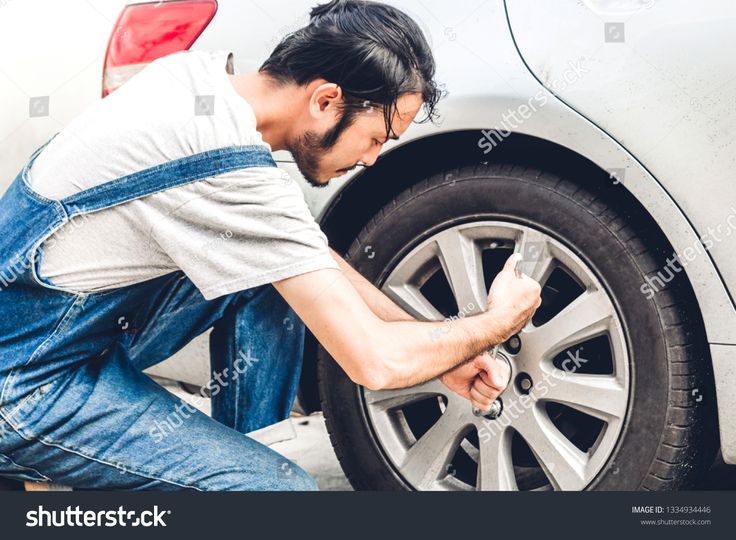
You can eliminate the descent from under the rim like this:
We poison all the air and remove the wheel from the car.
It is best to disassemble it, so it will be much more reliable to fix the problem. In order not to do the balancing again after the procedure, it’s a good idea to mark the position of the nipple with chalk first.
The disk edges will have to be properly sanded with fine sandpaper in places of rust damage and covered with a new layer of paint.
After the paintwork has dried, we put the tire back on and spread the rubber on the places where the cord touches the disk with a special sealant or mastic. Or you can use the soap solution again, but this time cook it much thicker so that it resembles glue in viscosity. And with the help of a simple brush, we go around the entire circumference of the cord on both sides of the wheel.
We inflate the tire with a compressor, pressing the cord against the disk.
So we will eliminate the damage and provide a tighter fit on the seat. The sealing compound must penetrate all micropores and prevent new bleeding of air.
If there is absolutely no time to remove the wheel, and trouble overtook you on the road, it is enough to bend the edge of the cord and also smear the rubber with sealant or soap. This is quite enough to reach the garage or car service.
The described methods are suitable if there was no serious deformation and there are no cracks in places near the mounting holes or there is no damage to the tire cord. In the worst case, you can’t do without rolling a disk in a tire fitting or replacing it. If you have an alloy wheel, then you can fix it, but this is an extremely expensive business, comparable to buying a new one. However, even when repairing at a tire center, rolling a casting does not always help, and it may soon crack. It’s better not to even think about repairing the wheels yourself. A mistake can be costly.